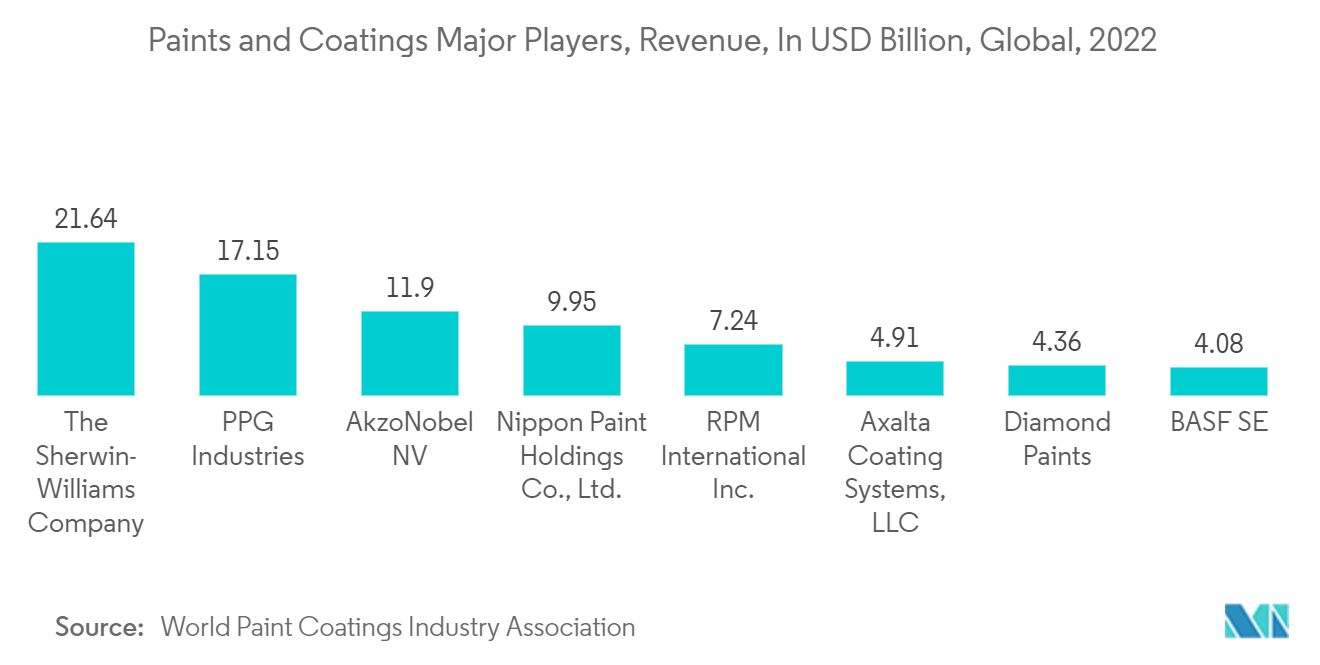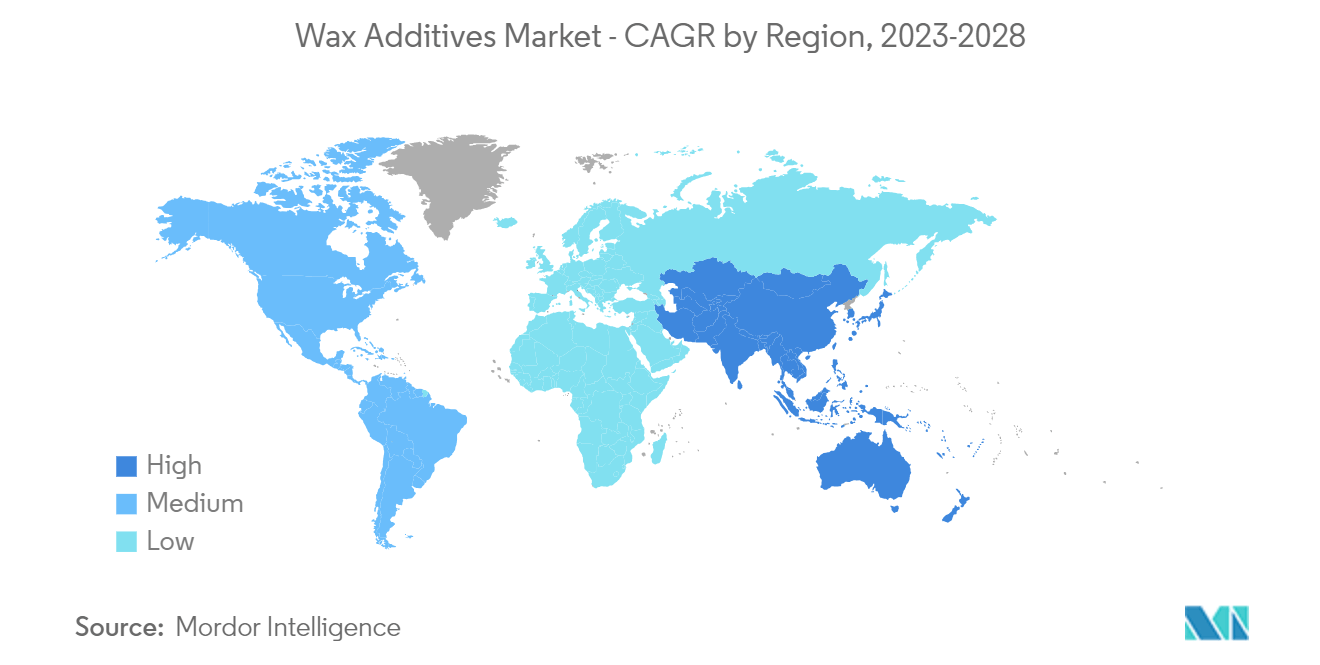Market Trends of Wax Additives Industry
Wax Additives Expected to find High Demand in Coatings Segment
- Wax additives are widely used in coatings to improve the appearance of finished products, help protect from bruising or scratching during the shipping and handling of goods, and act as a carrier for active compounds.
- They are used extensively in coatings because of their flexibility and significant positive impact on many formulation types. They can provide general durability, scratch and abrasion resistance, and even anti-slip properties.
- According to the World Paint and Coatings Industry Association, in 2022, the global sales volume of paints and coatings stood at around USD 179.9 billion, with an annual growth rate of 3.1%.
- The North American market value stood at USD 33.92 billion, while Europe was valued at USD 42.37 billion in 2022, respectively. The growth of these respective regions is attributed to an increase in the number of house renovation activities in Canada, Germany, and the United States.
- The Asia-Pacific paints and coatings market stood at USD 63 billion in 2022. The East Asian region is the most lucrative market for paints and coatings worldwide. The Chinese market further increased by 5.7 % in 2022. From the current trend, in 2022, China's total sales of paints and coatings exceeded USD 45 billion.
- The paint and coatings industry grew over the years due to increased demand from the automotive, building, and construction sectors. Such increased demand led to several expansion projects by global and domestic players in several countries to reduce the demand and supply gap. For instance, in June 2023, AkzoNobel unveiled the USD 55 million expansion of its wood coatings manufacturing campus in south High Point in North Carolina, United States.
- Therefore, all the above factors are expected to drive the coatings application, enhancing the demand for wax additives during the forecast period.

Asia-Pacific Region Expected to Lead the Global Market
- The Asia-Pacific region saw significant growth in the wax additives market, with countries such as China and India accounting for significant consumption of coatings and printing inks.
- In China, the major demand for wax additives is driven majorly by applications such as coatings, printing inks, candles, leather finishing, and others.
- According to the World Paint & Coatings Industry Association, China presently dominates the region market, which is growing at a CAGR of 5.8%. The Chinese paints and coatings market increased by 5.7% in 2022.
- From the current trend, in 2022, China’s total sales of paints and coatings exceeded USD 45 billion. It is, thereby, depicting the country’s dominance with the largest market share (78%) in East Asia.
- The Indian Paint and Coating Industry accounts for around USD 8 billion. It is considered one of the fastest-growing economies globally. India comprises around 3,000 paint manufacturers. The country exhibits a 75% share of architectural and a 25% share of industrial paints.
- Further, the usage of candles in China is very popular, particularly during the holiday season. The most important of all traditional Chinese holidays is Chinese New Year, also known as Spring Festival.
- As per the trade map, the country exported candles with a value of USD 77,583, 91,034, and 98,438 in the June, July, and August months of 2023.
- Japan, on the other hand, imported USD 2,495 worth of candles from all around the world in August 2023. A particularly popular design is a candle with flower patterns that became popular amongst Buddhists as a daily offering in the country. Moreover, painted wax candles are used by people who love candles.
- Furthermore, international ink manufacturers also hold a major presence in China. Hangzhou Toka Ink, a joint venture with T&K Toka, and Tianjin Toyo Ink Co. Ltd, a joint venture with Toyo Ink, are China’s two largest ink manufacturers. DIC, Flint Group, Sakata INX, Siegwerk, and other ink industry leaders also include a sizable presence in China.
- The factors above, coupled with government support, are contributing to the increasing demand for the wax additives market during the forecast period.


